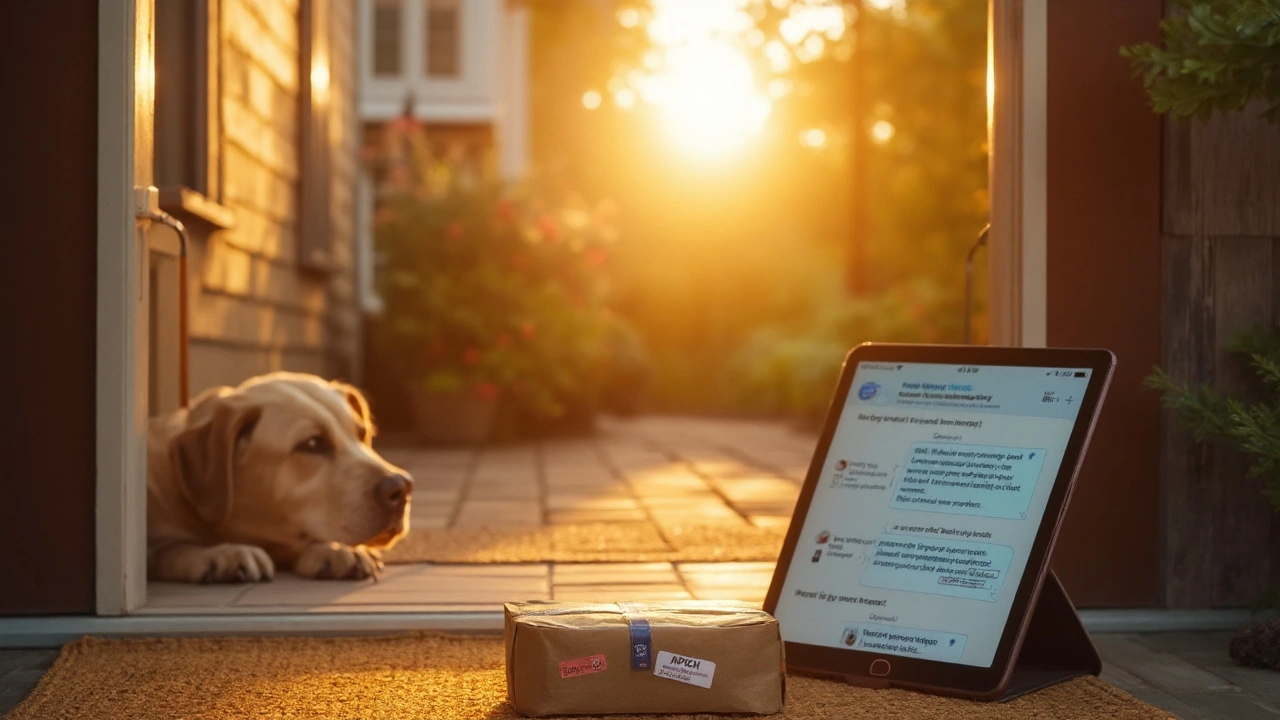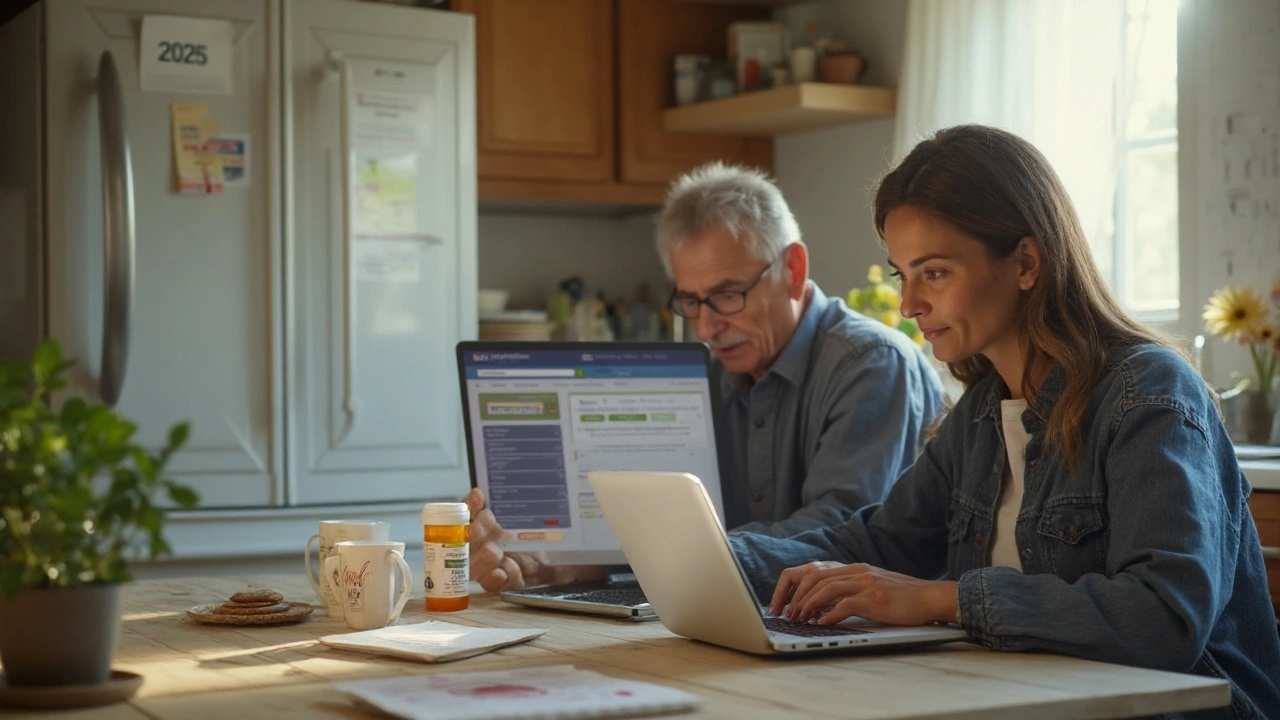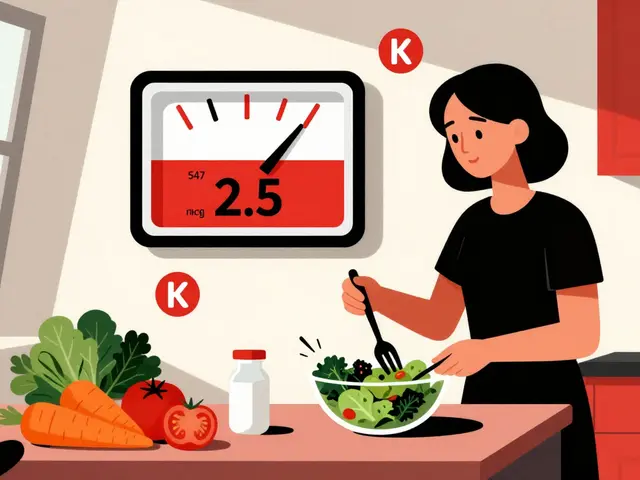Yes, you can buy generic Celebrex (celecoxib) online for less-but not from just anywhere. The goal is simple: get a fair price on real medication, avoid sketchy websites, and make sure what shows up actually helps your pain. I’ll show you how to spot legit pharmacies fast, what you should pay in 2025, and the safety checks that matter, especially if you have heart, stomach, or kidney risks.
What you probably want to get done right now:
- Find a legit pharmacy that requires a prescription and ships fast.
- See the real price range for celecoxib 100 mg and 200 mg, 30- and 90-day fills.
- Know the safest way to order (and the red flags that scream “fake”).
- Compare celecoxib to similar meds if price or side effects become a problem.
- Understand the key risks and interactions so you don’t get blindsided.
What you’re actually buying-and how to do it safely
Celecoxib is the generic for Celebrex, a COX-2 selective NSAID used for osteoarthritis, rheumatoid arthritis, ankylosing spondylitis, acute pain, and menstrual pain. It aims to reduce inflammation with a bit less stomach irritation than older NSAIDs like ibuprofen or naproxen. Less doesn’t mean none. GI bleeding and heart risks are still real, especially at higher doses or with long-term use.
Quick basics:
- Prescription status: In the U.S., celecoxib is prescription-only. Any website that sells it “no prescription needed” is not operating legally. That’s your biggest red flag.
- Common strengths: 100 mg and 200 mg capsules. Don’t split or crush capsules. If you can’t swallow capsules, the FDA label allows opening and sprinkling the contents on applesauce right before taking-ask your prescriber if that’s appropriate for you.
- Usual dosing (per FDA labeling; your prescriber decides): OA: 200 mg daily (once-daily or 100 mg twice daily). RA: 100-200 mg twice daily. Acute pain: often higher at the start, then 200 mg daily or twice daily short term. Max dose depends on why you’re taking it.
Safety-first rule: If a site looks too good to be true-prices at pennies per pill, no Rx needed, crypto-only payments-walk away. Counterfeit meds can be contaminated, underdosed, or contain the wrong drug. I don’t gamble with pain meds and neither should you.
Legit pharmacy checklist (the 90-second version I use):
- Requires a valid prescription. Telehealth is fine if it’s a real licensed service.
- U.S. address and license listed, plus a way to reach a licensed pharmacist (chat or phone). If international, they should still verify your Rx and show licensing in their country.
- Accreditation: Look for recognition by programs like the NABP’s .pharmacy domain, or certification by recognized third parties that monitor online pharmacies. You can search the NABP site to verify.
- Secure checkout (https), major payment options, and clear privacy and refund policies. “Crypto-only” is a red flag.
- Shows the drug manufacturer, strength, quantity, and pill images. Batch/lot and leaflets should come in the package.
Red flags to bail on immediately:
- No prescription needed or “online questionnaire replaces your Rx” without clinician review.
- No physical address or license details.
- Prices that are 80-90% lower than U.S. discount prices without any reason.
- Pushy upsells, spammy pop-ups, or promises like “miracle cure” or “no side effects.”
- They won’t tell you who makes the drug or where it ships from.
How to place a safe order, step by step:
- Get your prescription: Ask your clinician for celecoxib with your preferred strength and a 90-day supply with refills if you use it long term. This usually lowers your cost per capsule.
- Price check: Compare at least three reputable pharmacies (include your insurer’s mail-order if you have coverage). Look at price per capsule for 100 mg vs 200 mg.
- Verify the site: Confirm licensing, Rx requirement, and pharmacist access. Skim reviews, but prioritize official verification.
- Place the order: Upload your Rx or have the prescriber e-prescribe. Double-check strength and quantity before paying.
- On delivery: Inspect packaging. You should see a patient info leaflet, the exact strength you ordered, and pills/capsules that match the description. If anything is off, contact the pharmacy before taking it.
Need a fast mental shortcut? If you can’t tick “Rx required,” “licensed,” and “pharmacist available,” stop there. Even if the price looks perfect.
SEO note for clarity: If you came here to buy generic celebrex online, the safe path is simple-licensed pharmacy, real prescription, fair price, and nothing sketchy in checkout.

Real-world prices, shipping, and the smart way to order
What should you pay in 2025 in the U.S.? Prices vary by region, insurance, and supply. Here’s a practical range I see across big-box chains, mail-order, and reputable online pharmacies:
- Celecoxib 200 mg, 30 capsules: roughly $8-$25 with common discount cards; $20-$60 cash without coupons.
- Celecoxib 200 mg, 90 capsules: roughly $18-$50 with discounts; $35-$120 cash without coupons.
- Celecoxib 100 mg, 30 capsules: often similar to 200 mg because pricing is not always linear; check both strengths.
Why the spread? Contracts, inventory, and how each pharmacy prices generics. The per-capsule math matters more than the sticker price. Divide total cost by capsule count so you don’t get fooled by strange package sizes.
Ways to pay less without cutting corners:
- Ask for a 90-day script. Per-capsule cost usually drops, and you reduce shipping fees.
- Check both strengths. Sometimes 200 mg is cheaper per mg than 100 mg (or vice versa). Your prescriber can adjust dosing if appropriate.
- Use free discount cards or your insurer’s mail-order. Even if you have insurance, cash with a discount card can beat your copay at times.
- Stick to one or two pharmacies over time. Loyalty programs can shave a few dollars off and make refills smoother.
- Telehealth when you need it. A brief visit to renew a script can be cheaper than an in-person appointment, but make sure it’s a licensed clinician.
Shipping expectations:
- U.S. domestic: 1-5 business days for ground; 2-3 days for expedited. Refrigeration isn’t needed for celecoxib, so standard packaging is fine.
- International mail-order: 10-21 days is common. Customs can add delays. If you’re out of meds now, this is not the path to start.
Returns and refunds: In the U.S., pharmacies generally can’t accept returns of prescription meds once they leave the pharmacy, for safety reasons. Expect replacements only if the pharmacy made an error or the package was damaged. Always read the policy before you buy.
What will your package look like? You should get manufacturer-labeled bottles or blister packs, an information leaflet, and clear details on strength and directions. The capsule color and imprint can change based on the generic maker; that’s normal as long as the label matches. If the capsule’s look changes on refill, check the imprint against the pharmacy description just to be sure.
Quantities and dose planning:
- 30-day vs 90-day: 90-day is usually cheaper per day. If you’re trying celecoxib for the first time, a 30-day fill lets you confirm it works for you before committing.
- 100 mg vs 200 mg: Don’t self-adjust. Ask your prescriber which strength makes sense for your condition and risk profile.
- Capsules are not designed to be split. If swallowing is an issue, ask about opening the capsule and sprinkling the contents in applesauce (per labeling) as a workaround.
Payment and privacy sanity check:
- Use major cards or HSA/FSA. Avoid sites that pressure you into crypto or wire transfers.
- Make sure checkout is encrypted (https). If your browser throws a warning, listen to it.
- If you value privacy, choose discreet packaging-most reputable pharmacies do this by default for all Rx shipments.
Decision cues to pick your ordering route:
- You need it fast: Use a local licensed pharmacy or same-day delivery partner. Price-match with a discount card.
- You’re on a budget and can wait a couple days: Use a reputable online U.S. pharmacy with a 90-day fill.
- You take celecoxib long-term and want the lowest steady price: Insurer’s mail-order or a well-reviewed online pharmacy with auto-refill and transparent pricing.
- You see a price that’s half of the lowest U.S. discount price and the site is vague about licensing: Skip it. The risk isn’t worth a few dollars.

Risks, interactions, alternatives, and quick answers
This part matters. Celecoxib has well-documented benefits-and risks. The FDA labeling carries a boxed warning for increased risk of serious cardiovascular thrombotic events (like heart attack and stroke) and for serious gastrointestinal bleeding and ulcers. Risk rises with higher doses, longer use, and in people with existing heart disease or GI risk factors.
Who should be extra cautious or avoid celecoxib (based on FDA labeling and major guidelines):
- History of heart attack, stroke, or high cardiovascular risk. Use the lowest effective dose for the shortest time, or consider alternatives.
- GI bleeding or ulcers, especially if you’re 65+ or also on anticoagulants, antiplatelets, or SSRIs/SNRIs. Your prescriber may add a PPI for stomach protection if you need an NSAID.
- Kidney disease, uncontrolled hypertension, or heart failure-NSAIDs can worsen fluid retention and kidney function.
- Asthma triggered by aspirin or other NSAIDs. Cross-reactivity can happen.
- Sulfonamide allergy (“sulfa” allergy). Celecoxib is a sulfonamide-discuss with your clinician.
- Pregnancy: Avoid NSAIDs at 20 weeks or later unless your clinician says otherwise; avoid at 30 weeks or later due to risk of fetal complications. Discuss breastfeeding questions with your clinician.
- Post-CABG surgery: Contraindicated.
Common side effects: Upset stomach, heartburn, swelling, increased blood pressure, headache, dizziness. Serious warning signs to act on right away: Chest pain, sudden shortness of breath, weakness on one side, slurred speech, black or bloody stools, vomiting blood, little or no urine, severe rash. If any of these happen, stop the medication and get urgent help.
Interactions to know (not a full list):
- Blood thinners and antiplatelets (warfarin, apixaban, clopidogrel): Higher bleeding risk. If you’re on warfarin, your INR may need closer monitoring.
- SSRIs/SNRIs: Additive GI bleeding risk when combined with NSAIDs.
- ACE inhibitors/ARBs and diuretics: The “triple whammy” can worsen kidney function and blunt blood pressure control.
- Lithium and methotrexate: Levels can rise; monitoring may be needed.
- Strong CYP2C9 inhibitors (like fluconazole): Can raise celecoxib levels; dose adjustment might be needed.
- Aspirin: Celecoxib doesn’t replace low-dose aspirin for heart protection. Taking both can raise GI risk-ask about a PPI if you must combine.
Alternatives if celecoxib isn’t a fit:
- Other NSAIDs: Naproxen, ibuprofen, meloxicam, diclofenac. Each has trade-offs in heart and stomach risk. Naproxen may have a more neutral heart profile but can be tougher on the stomach. Meloxicam is once daily but not COX-2 selective.
- Topicals: Diclofenac gel for localized joint pain (knees, hands) often works with less systemic risk.
- Acetaminophen: Not anti-inflammatory, but may help pain when inflammation isn’t the main driver. Easier on the stomach; watch liver dose limits.
- Non-drug add-ons: Physical therapy, weight loss for knee OA, heat/ice, braces, sleep optimization. These multiply the effect of any medication you choose.
How celecoxib compares to nearest options, in simple terms:
- Versus ibuprofen/naproxen: Similar pain relief at equivalent anti-inflammatory doses. Celecoxib may be gentler on the stomach for some people but still carries GI risk. Cardiovascular risk exists for all prescription-strength NSAIDs-dose and duration matter.
- Versus meloxicam: Both are once daily. Celecoxib has COX-2 selectivity; meloxicam is partially selective. Pricing is often similar-choose based on your risk profile and response.
- Versus topical diclofenac: Topical is safer for the gut and heart but only works well for localized joints. For widespread pain, oral meds are more practical.
Mini-FAQ
- Do I need a prescription to buy celecoxib online? Yes. A real pharmacy will ask for it. Some offer telehealth with licensed clinicians if you don’t have a current script.
- How cheap can it get without being sketchy? With common discounts, 200 mg often runs under a dollar per capsule in the U.S., sometimes much less. Prices far below that are suspicious if other sites can’t match them.
- Is overseas mail-order safe? It can be if the pharmacy is licensed, verifies prescriptions, and has real accreditation. But shipping is slow and returns are tricky. If you need reliable refills, U.S.-based mail-order is usually smoother.
- Can I take celecoxib with low-dose aspirin? Only if your clinician says so. This combo raises GI risk; you may need a PPI for protection.
- Can I drink alcohol with celecoxib? Light drinking increases GI risk less than heavy use, but the safest play-especially if you have ulcer history-is to avoid alcohol or keep it minimal.
- Is long-term use safe? Many people use celecoxib long term under supervision. The key is the lowest effective dose, periodic check-ins, and watching blood pressure, kidney function, and GI symptoms.
- Can I open the capsule? The FDA labeling allows opening and sprinkling the contents on applesauce right before taking if you can’t swallow capsules. Don’t store the mixture. Ask your clinician before changing how you take it.
Credibility notes: The safety and dosing points above align with the FDA-approved celecoxib label (revised versions through 2024), major rheumatology and osteoarthritis guidelines, and standard pharmacy practice checks from U.S. regulatory bodies like the NABP. For online pharmacy verification, check official resources that list licensed or accredited sites.
Clear, ethical next steps if you’re ready to order:
- Ask your prescriber for celecoxib with a 90-day supply and refills if this is part of your ongoing plan.
- Compare prices for 100 mg and 200 mg at three licensed pharmacies (include your insurer’s mail-order if you have coverage).
- Confirm the site requires an Rx, lists its license, and offers pharmacist support.
- Place the order with standard shipping if you have a cushion of pills left; expedite if you’re down to a few days.
- On arrival, check the label, strength, and capsule imprint before your next dose.
Troubleshooting by situation:
- No current prescription: Use a reputable telehealth service or message your clinician’s office for a refill. Don’t buy from “no-Rx” websites.
- Need it today: Call a local pharmacy, price with a discount card, and do same-day pickup. Mail-order helps on refills once you’re stable.
- Very tight budget: Ask for a 90-day fill, compare 100 vs 200 mg prices, and check both insurance and cash discount options. Sometimes changing the pharmacy saves more than changing the drug.
- History of ulcers or on blood thinners: Ask your clinician about a PPI for GI protection or whether topical options could cover your pain instead.
- High heart risk or past heart attack: Revisit the need for celecoxib and dose. Naproxen may be considered in some cases, but this is a clinician call.
- Sulfa allergy: Bring it up before you start; you may need a different NSAID.
- On ACE inhibitor/ARB plus a diuretic: Ask for kidney labs and a plan to monitor blood pressure and kidney function.
- Pregnant or trying: Avoid NSAIDs unless your clinician specifically instructs otherwise, especially after 20 weeks.
Bottom line: You can buy celecoxib online safely and cheaply if you stick to licensed pharmacies that require a prescription, verify their sourcing, and offer pharmacist support. Get the dose right with your clinician, choose a 90-day fill when it makes sense, and watch for the few big red flags that separate real pharmacies from risky ones. That’s how you save money and stay safe.






Keep your prescription file handy and treat a 90-day supply as your friend when the script is appropriate.
Order from a pharmacy that shows a license, lists a pharmacist contact, and has secure checkout. If the price is absurdly low and the site asks for crypto only, walk away and save yourself the headache.
When the pills arrive, match the imprint on the capsule to the label right away and keep the patient leaflet for dosing and interaction notes. If anything looks off, call the pharmacy and do not take the pills until the issue is resolved.
For people who are trying celecoxib for the first time, start with a 30-day fill when you can, then switch to 90 days if it works. Keep a simple log of pain levels and side effects for the first month so your clinician can adjust dose or swap meds if needed.
August 22Ellie Hartman